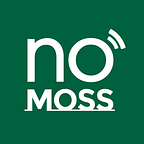Setting strategy in a hybrid world
As a leader the task to set strategy commonly falls upon us. What does that look like in this changed world? Below, I talk about the essence of strategy, how it’s changed, and give you practical tools to successfully implement strategies within your organisation.
The essence of strategy
Von Clausewitz was a Prussian general who authored , (“On War”), a seminal treatise on military strategy relevant to business contexts. He defined strategy as: The necessary response when operating in the reality of limited resources; the active choice to leverage these resources toward competitive advantage. The suggested approach is timeless:
- Intelligence proceeds operations
- Hypothesise a central animating idea for victory
- Concentrate resources on enacting that hypothesis
- Remove that which we will not do
- Ignore everything else
Do you and your teams consider these when formulating strategy? We’ve seen Product Owners burdened with an overabundance of work and an underabundance of concentration. We’ve seen millions of dollars spent building products and services without a central animating idea for victory.
Changes for a modern world — Investing in Decision Agility
As modern business leaders — not generals; not military engagements — we amend the above approach and add a sixth concept:
Re-evaluate early and often, seeking to outlearn the enemy
Military and business leaders have seen that decision agility can often defeat raw strength.
This means using mechanisms like decentralised decision making and facilitated events like Retrospectives (regularly scheduled reflect-and-improve workshops) to give us the ability to adapt.
Changes for a modern world — Role Modelling Relating
The added concept — from Senge et al., a MIT systems scientist — is relating. This is one of four skills required of effective leadership teams (the others being sensemaking, visioning, inventing). At No Moss, the one we most commonly see expressed weakly is relating. To define it: Modern leadership teams must be adept at building relationships within and across the organisation.
The social debt caused by the pandemic, the lowered bandwidth of human communications over Zoom et al., has meant that small actions can sometimes be misinterpreted, and this growing lack of trust expands to create the hybrid office version of road rage. I recall my anger at the Red Camry that cut me off this morning; my rage in part having had stemmed from not seeing the other drive’s body language that it was unintended and their sheepish apology. I compare that to how angry I became over sharp interruption from a colleague over a Teams chat (because — unknown and unseen by me — they were distracted, or time-poor, with no ill intent).
It is the leader’s role to not just set the strategy, but to lead the organisation via role modelling to grow in the skill of relating.
We’ve got a pandemic’s worth of social debt to pay down together.
Practical tools
There are three powerful things you can do to improve decision agility and role model better relating skills as a leadership team and as an organisation:
- Leverage emergent, agile strategy; via techniques like the advice process
- Make social debt visible, via team norms
- Run retrospectives, leveraging your people’s relating skill to pay down the social debt
For those interested in further reading; I do recommend various summaries of Von Clausewitz ‘s body of work as it pertains to business strategy; and the original Senge et al. article “In Defense of the Incomplete Executive”.
As always, I’d be delighted to hear how you go with putting these ideas into action.
If you’d like to help implementing or to know more about any of these techniques, reach out to us at start@nomoss.co. In the future, our newsletter will feature more of these techniques and concepts.
Originally published at https://nomoss.co by Steven HK Ma on December 15, 2022.
